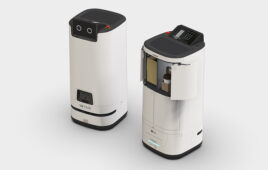|
Listen to this article
|

Sanctuary’s seventh-generation Phoenix includes both hardware and software improvements. | Source: Sanctuary AI
Sanctuary AI today unveiled the seventh generation of its Phoenix humanoid robot. The Vancouver-based company said its upgraded robot is bringing it closer to the creation of the world’s first “human-like intelligence in general-purpose robots.”
This announcement comes less than 12 months after the company launched its sixth-generation robot, and less than 16 months after it first commercially deployed its fifth-generation humanoid in January 2023.
In this week-long pilot deployment, Phoenix worked at a Mark’s retail store in Langley, British Columbia. In that trial, Phoenix successfully completed 110 retail-related tasks, claimed Sanctuary Cognitive Systems Corp., which was founded in 2018 and does business as Sanctuary AI.
The company said it made numerous improvements to both the robot’s hardware and its AI control system Carbon.
“It’s incredible to see the progress that has been made in just 11 months,” stated Geordie Rose, co-founder and CEO of Sanctuary AI. “With Generation 7, we have a system that we believe is the most closely analogous to a person of any available.”
“We see this as not only the cornerstone of general-purpose AI robotics but a critical step on the path to artificial general intelligence, and we’re thrilled to be leading the charge on it,” he added. “This all adds up to being able to capture increasing quantities of higher-quality, higher-fidelity human behavioral data, which in turn will expedite the development of foundational AI models and customer deployments.”
This generation of Phoenix excels at human behavioral data capture, giving Carbon access to some of the best training data available. the company asserted.
Sanctuary AI obtains IP toward general-purpose robots
In December 2023, Sanctuary AI announced that it had acquired intellectual property (IP), adding to its asset portfolio of touch and grasping technologies. At the time, the company said it expected the assets from Giant.AI Inc. and Tangible Research to play a pivotal role in its construction of general-purpose robots.
Sanctuary AI credited these IP assets with expanding its patent portfolio centered around grasping technology. These include visual servoing, real-time simulation of the grasping process, and mapping between visual and haptic data. While it not confirm whether they went into Phoenix, it seems likely.
Phoenix includes several upgrades
Sanctuary listed the following the upgrades in its latest release:
- Phoenix now has increased uptime, which means that it has more time for training and data capture.
- The robot also now has increased build and commissioning speed, allowing Sanctuary to bring more units online faster.
- Sanctuary has reduced Phoenix’s bill of materials, reducing the cost of manufacture.
- The company has increased range of motion in the wrists, hands, and elbows. It has also increased hand durability.
- Sanctuary said it further miniaturized hydraulics, resulting in reduced weight, power consumption, and complexity, with increased hardware and software measures that exceed specified safety standards.
- Phoenix has improved visual acuity and tactile sensing, leading to higher-fidelity data to train the AI control system.
- The time it takes for new tasks to be automated has gone from weeks to less than 24 hours, marking a major inflection point in task automation speed and autonomous system capability.
Earlier this month, Sanctuary AI announced a strategic partnership with Magna International. Through this expanded partnership, the company plans to equip Magna’s automotive component factories with general-purpose AI robots. It also plans to engage Magna to manufacture the Phoenix robots under contract in the future.







Tell Us What You Think!